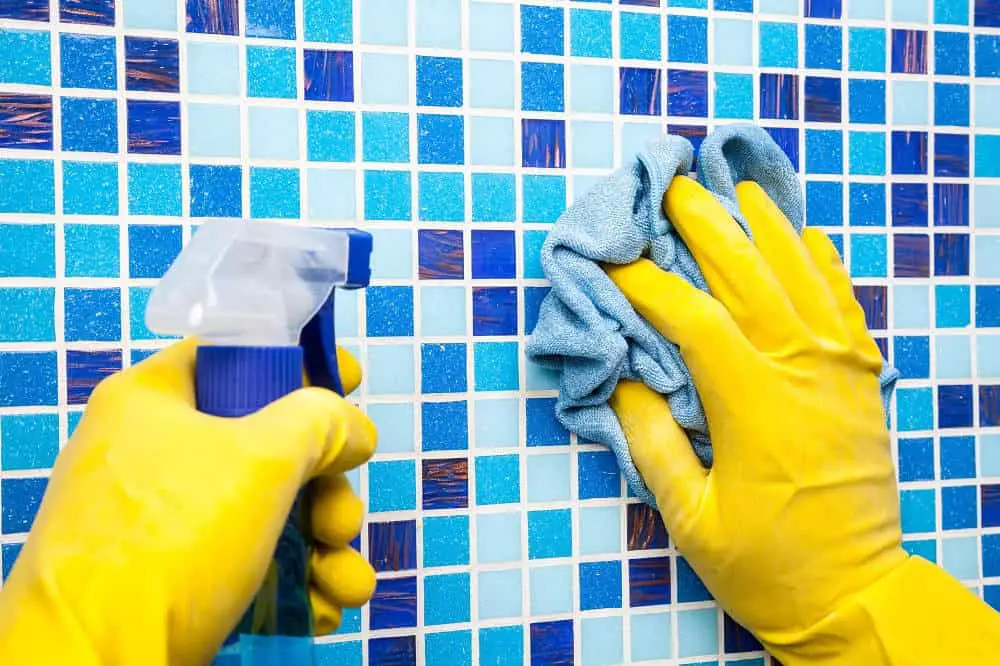
Having a clean swimming pool takes a lot of effort. But you as a responsible pool owner started to notice white spots starting to form on walls. Those white little bumps on your pool walls, railing and ladders is calcium scaling. Calcium scaling is an unsightly white to white-grey stain that forms on pools sides when the pool’s calcium level and pH are imbalanced. Calcium scales can be removed with pool scale remover, although it can be difficult to do. If your pool has a buildup of calcium scaling, we will show you how to treat it and take preventative steps to stop it from reforming.
Two Types of Calcium Buildup
There are two different types of calcium scaling: calcium carbonate and calcium silicate. Calcium carbonate is white and flaky, and it’s fairly easy to remove. Calcium silicate, on the other hand, is white-grey and is much harder to remove.
Calcium silicate takes longer to form, pools that have calcium silicate buildup on their walls generally have scaling in the pipes as well. If it turns out you have calcium silicate in your pool, you may need to seek out professional help to remove the deposits in your pool and it’s filtration system.
You are going to want to first figure out what kind of calcium scaling has built up in your pool, simply place a few drops of muriatic acid on a deposit. Calcium carbonate will react with acid and foam; calcium silicate will not.
What Causes Calcium Build Up in Swimming Pools?
Calcium scaling is usually caused by either high pH, high alkalinity, or high calcium concentration. Temperatures that constantly changing along with rapid evaporation will cause deposits to settle along the sides of your pool wall, railing and ladders. Keep in mind, if you do not remove the deposit sooner rather then later, you may cause permanent damage to the pools surface.
Removing Calcium Carbonate Scaling
One of the best ways to remove calcium carbonate is to use a calcium releaser/cleaner, which is an acid-free product, so it doesn’t ruin the finish of the pool tile of glass.
A pumice stone should be used only on hard surfaces, such as concrete or tile. Simply use the stone to scrub the deposits. To prevent scratching, make sure you keep the stone and the surface wet at all times while you are scrubbing.
Many commercially available stain erasers will also remove calcium carbonate. Many of these products are designed to be applied in certain areas, so they often attach to a pole for easy use. If you end up using the stain eraser, follow the manufacturer’s instructions.
Pool suppliers often carry calcium scaling treatments that are safe for all pool surfaces, including fiberglass, vinyl and steel pools. These treatments are simply added to the pool’s water and they dissolve the deposits over a period of weeks.
Removing Calcium Silicate Scaling
Calcium silicate deposits are removed with a pumice stone and require a lot of scrubbing. Keep in mind, you can only use a pumice stone on concrete or tile. If you have a fiberglass pool, a pumice stone will scratch the surface.
You can use a professional calcium remover as another option. It will dissolve the deposits.
Always test the product first to make sure that it doesn’t scratch or discolor the surface. With stubborn scales, you will have to reapply the remover several times until the surface is free of all calcium scaling.
Will Muriatic Acid Remove Calcium Deposits?
Yes, you can remove calcium deposits using muriatic acid.
First, you are going to want to test for calcium deposits. Take your safety into consideration such as wearing safety goggles and using rubber gloves to avoid direct contact with the acid.
Second, you will want to use a descaling agent like Scaletee Plus. Apply 3 to 6 fluid oz. of the solution for every 1,000 gallons of pool water. Scaletee Plus has muriatic acid pre-mixed, acting as a long-term descaler, and does not require you to manually dilute it with fresh water. You will want to allow the cleaning agent to circulate in the pool.
Lastly, add water until the pool is 1 to 2 inches above the scale line. You will want to keep the pool pump on for 8 to 12 hours per day during the cleaning period. It can take up to 3 to 6 months to effectively descale a pool with muriatic acid. You will not have to scrub or wash since the pool pump is doing most of the work. After 4 weeks you will want to lower your pool level back to normal.
How Do I Prevent My Pool from Scaling?
Calcium scaling is caused by an imbalance between the calcium levels and pH of your pool. With that being said, you can prevent future calcium buildup by addressing these two factors. Consider doing the following:
- Lower the pH levels of your pool’s water, because pH can have a large effect on calcium scaling than calcium level does.
- Install an automatic pool cover so you can reduce the evaporation, because water evaporation can leave behind calcium.
- Remove calcium through a reserve osmosis water treatment.
Don’t let calcium scaling prevent you from having a great summer. Be proactive and test and maintain your water regularly. If you notice cloudy water or scaling on the sides of the pool, don’t wait to treat it. You want your family and friends to enjoy your backyard swimming pool. The last thing you want is to have calcium hardness or have to have downtime to address the buildup. Yes, maintaining a pool is hard work and can be frustrating. But if you take the proper steps and be proactive about your pool’s maintenance, you can enjoy your pool all summer long.
Going the Professional Route
There can be good reasons to allow professionals to take care of this problem for you. Depending on which method you use, it can take a lot of time, physical labor, and pool chemicals. Depending on the severity of the scaling, it can take hours of hard scrubbing. If you prefer not to spend the time and energy it takes, you can leave it up to the professionals.

